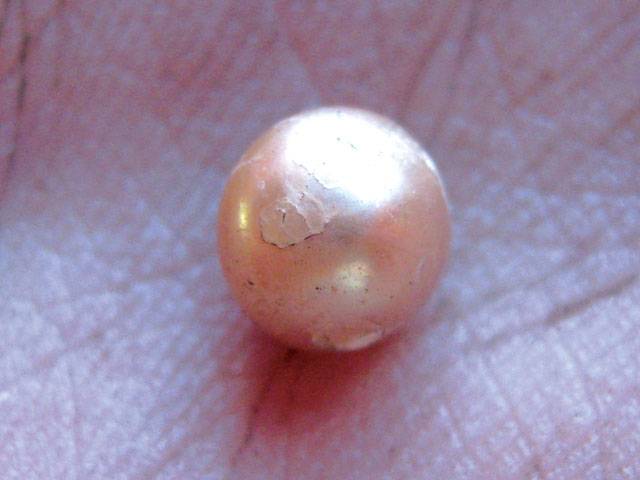SYDNEY: Australian scientists said Wednesday they have uncovered a ‘very rare’ 2,000-year-old natural sea pearl - the first found on the vast island continent - while excavating a remote coastal Aboriginal site.
Archaeologists were working the site on the north Kimberley coast of Western Australia when they came across the unique gem below the surface, said Kat Szabo, an associate professor at the University of Wollongong. ‘Natural pearls are very rare in nature and we certainly - despite many, many (oyster) shell middens being found in Australia - we've never found a natural pearl before,’ Szabo, who specialises in studying shells at archaeological sites, told AFP.
A midden is a prehistoric refuse pit. ‘The location makes it particularly significant because the Kimberley coast of Australia is synonymous with pearling, and has been for the better part of the last century.’ The pink-and-gold-coloured pearl is almost spherical, with a five-millimetre diameter. Due to its near-perfect round shape, the researchers used a micro CT scan to test its age and prove that it was naturally occurring rather than a farmed modern cultured pearl.
The oysters that produce pearls have been used in rainmaking ceremonies in indigenous cultures, and their shells have been found in the central desert more than 1,500 kilometres (930 miles) away.–AFP
Archaeologists have known about the rainmaking rituals but were not aware of how far back in history they had been practised. ‘Studying the pearl has led us to the study of the layer in which it's found,’ Szabo said.
‘In indigenous terms, that's telling a really interesting story about a cultural tradition to do with pearl shells which we knew historically but we've never been able to prove that it went back into the past.’ The pearl is set to go on display at the Western Australian Maritime Museum in Perth later this month, with details of the find published in the Australian Archaeology journal.
Saturday, November 23, 2024
2,000-yr-old pearl found in Australia

10:58 AM | November 15, 2024
8:56 AM | November 07, 2024
No sit-Ins or gatherings allowed in Islamabad: Naqvi
10:20 PM | November 22, 2024
Govt scheme to provide Rs 1.24bn airfare relief for pilgrims
8:53 PM | November 22, 2024
UN says 2024 'deadliest year on record' for humanitarian aid workers with 281 deaths globally so far
8:46 PM | November 22, 2024
Metro bus service to remain closed on Nov 24 ahead of PTI protest
8:10 PM | November 22, 2024
-
Lahore tops global pollution rankings as smog worsens, AQI reaches hazardous levels
-
Lahore tops global pollution rankings as smog worsens, AQI reaches hazardous levels
-
Hunger crisis to increase in South Sudan, warns UN
-
Pakistan’s judiciary champions climate justice at COP29 in Baku
-
Punjab struggles with persistent smog as Met Office forecast rainfall
-
Punjab residents face escalating smog crisis as pollution levels soar across country
UN Crossroads
November 22, 2024
Smog Trade-off
November 22, 2024
Undersiege Again
November 22, 2024
Land of Vigilantes
November 21, 2024
United in Genocide
November 21, 2024
Proposal to counter increasing cases of harassment
November 22, 2024
Critique of RFE/RL’s Coverage of the SCO Summit
November 22, 2024
Real vs Reel
November 22, 2024
Independent Supreme Court
November 21, 2024
Fat Loss Fantasy
November 21, 2024
ePaper - Nawaiwaqt
Nawaiwaqt Group | Copyright © 2024





